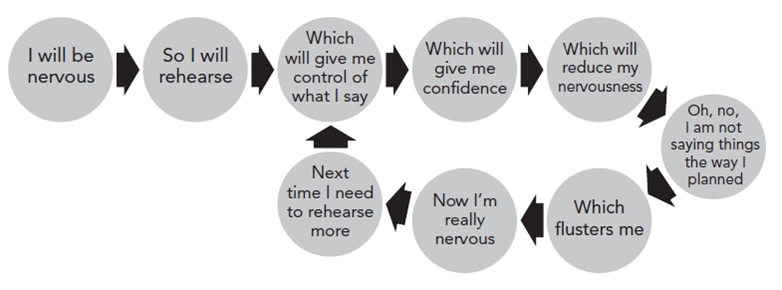
- Dale Ludwig Presentations, The Orderly Conversation
Greg, Turpin Communication’s VP, has written a couple of great blog posts on preparing yourself to deliver presentations and training sessions.
- Don’t Overlook These Steps When Preparing Your Presentation
- Dry Runs: The Key to Training Readiness in the Virtual World
Among the things he talks about is how we recommend dry runs rather than rehearsal. Learners have asked what that means or what that looks like, so I wanted to write a post that specifically goes into that and describes what a dry run should be.
Rehearsing is for Actors
Rehearsal is what actors do. They work on their scripts, getting the words memorized letter-perfect and thinking about how to embody their character throughout their time on stage. If they mess up during a rehearsal—get tongue-tied, forget a line—usually, they start over from a few lines back, trying each time to be closer to perfect by the time they have an audience. This has worked well for centuries—for actors. But audiences don’t ask actors questions. Actors don’t have to worry about whether the content contains the right ideas or wording or whether they can elaborate on what’s in the script if asked. Business presentations are different in a lot of ways.
Two key differences to Rehearsing vs. Practicing:
- If you’re giving a business presentation, you are both the writer and the deliverer. You’re not just a performer reciting what you’ve memorized. Your audience’s expectation is that you understand your topic and have a depth of knowledge to answer questions and offer support beyond what’s on your slides.
- At a theatrical production, everyone’s expectation is that the audience will react to what’s happening on stage, but they won’t interact. In a business presentation, an Orderly Conversation®, the expectation is that there will be give-and-take, which may include interruptions, tangents that have to be managed, listeners who would prefer to talk a little too much, and requests for additional data, analysis, or recommendations. Actors don’t have to worry about those things.
If you rehearse like an actor, you may end up memorizing, or trying to memorize, your content. There are lots of problems with this. Few businesspeople have the time to get their presentations letter-perfect, so in the lead-up to their presentation, their attention is focused on not getting a word wrong rather than how they’ll engage with their audience or deliver their content in a way their audience understands. Further, because the order, wording, and flow have been so tightly nailed down in rehearsal, any interruption can throw off the presenter and the presentation, leading to heightened nervousness, confusion, and time spent finding the thread again. Since Orderly Conversations are intended for give-and-take, this kind of rehearsal is actually beyond suboptimal; it’s actually bad for presenters.
This first graphic below represents the thought process of presenters who want to rehearse.

And this one represents what actually happens fairly often when presenters decide to rehearse or memorize.

So, what should you do instead?
Practice by Conducting Dry Runs
If your presentation is pretty low stakes, such as a weekly check-in with your team, you might not need to do more than think about it before you deliver it. But if there’s a lot riding on your business presentation or if you are especially anxious about delivering it, then a dry run is the way to go. The differences between a dry run and a rehearsal all have to do with the purpose of the presentation. In an Orderly Conversation, you anticipate–
- Engaging with your audience, which means that in the moment, you are aware of how they’re receiving the information you’re delivering and what they might need beyond what you’ve prepared.
- Responding to their need for elaboration, clarification, and getting questions answered.
- Changing up what you say depending on how you decide to meet listeners’ needs.
It should be pretty obvious that rehearsal, as I defined it above, doesn’t accommodate an Orderly Conversation all that well. Dry runs do.
A dry run is really just delivering your presentation as though you have an audience, imagining how they’re receiving what you say, and anticipating questions or areas of confusion they might have. The key difference between rehearsal and a dry run is that in a rehearsal if you mess up, you go back and redo it until it’s perfect. In a dry run, if you mess up or misspeak, you adjust and move on. You don’t start over, aiming for perfection. In the real presentation situation, you won’t be able to stop and go back, so what’s the good of practicing like that?
I recently realized that when I’m preparing a new high-stakes presentation, I do my dry runs in roughly three phases. Each phase has a slightly different purpose, but each one leads me to a presentation that I’m confident about, and that will be effective for my audience.
Three Phases of the Dry Run Presentation
- Adjusting slide content. Often, you don’t know that your slides need fixing until you start to run through them. Revising slide content can involve anything from a major rearrangement of topics to adjusting how much you have on each slide to replacing words to avoid getting tongue-tied.
- If you discover you need to do a major overhaul of your slides, it may be best to stop, make the correction, and then start a new run-through. Practicing with slides you know don’t work isn’t a great use of time.
- If changes are minor, keep a notepad handy, make a note on what needs changing, and keep going. If you’re recording yourself (and you should), you can just state the correction out loud as a reminder of what you want to change. When you watch the recording, you can make the edit.
- Anticipating questions and reactions. This phase may also involve some adjustments to your slides, but now you’re focused on your audience. Since you’ve already done your audience analysis, you know who they are and what they need, and you were focused on those issues as you created your deck. However, sometimes at the dry run stage, you realize that further adjustments are necessary to make it easy for them to follow and benefit from your presentation. This is also where you should start to imagine what questions your listeners will have and think about how you might answer them. Again, this isn’t about preparing an answer; it’s about being prepared to answer with all the necessary relevant information at hand.
- Getting a feel for the flow. Once your slides have been edited to serve you and your listeners, it’s time to get comfortable with the whole process of delivering your presentation. This is where you connect with your slides, think about when and how you want to manage your audience’s focus, and most importantly, work on timing. The timing issue is why these run-throughs can’t stop and restart. Clicking the slide too soon, tripping over a word, or having a blank moment are all eventualities that might happen in the real presentation. Correct, adjust, and keep going. This is also the phase where you absolutely want to record yourself. As Greg says, “It’s never comfortable watching and listening to yourself, but there’s a lot to learn.”
At this point, if you want to bring in other stakeholders to watch a run-through before the actual presentation, you’re all ready to do so.
As I work through these phases on a given presentation, I discover each one takes less time because they’re not discrete, and each anticipates the next. By the time I’ve finished working out the issues with my slides, I’ve already been thinking about audience needs, and I’m establishing a good idea of my flow. The main benefit is that dry runs make me feel confident in my ability to deliver an effective presentation no matter what circumstances and my audience throw my way. I’m certain of my information, my slides are reliable and make things easy for me and my listeners, and I know my deck well enough to adjust in case the unexpected happens. Will it be perfect? If I’ve been doing my dry runs right, I don’t even know what perfect would look like, but that’s okay. Effective and flexible, not perfect, get business done.

